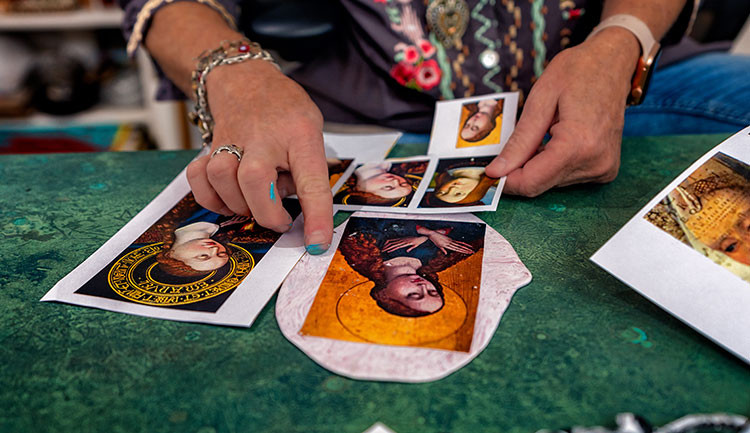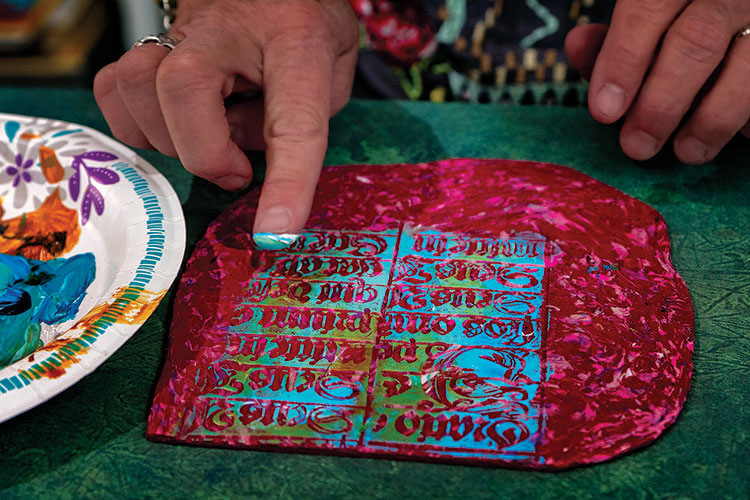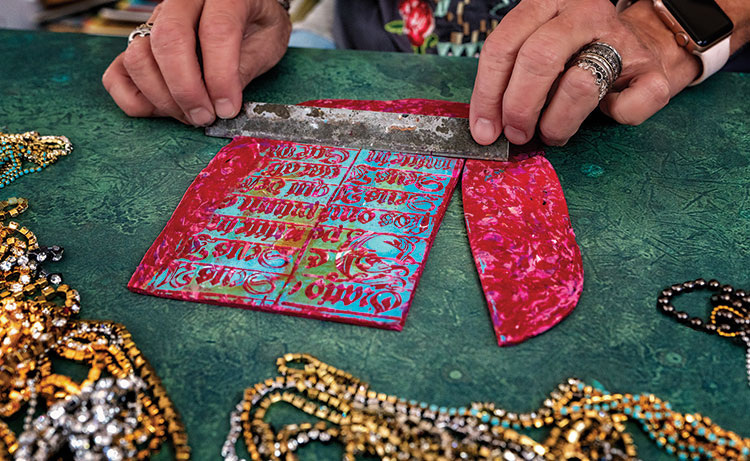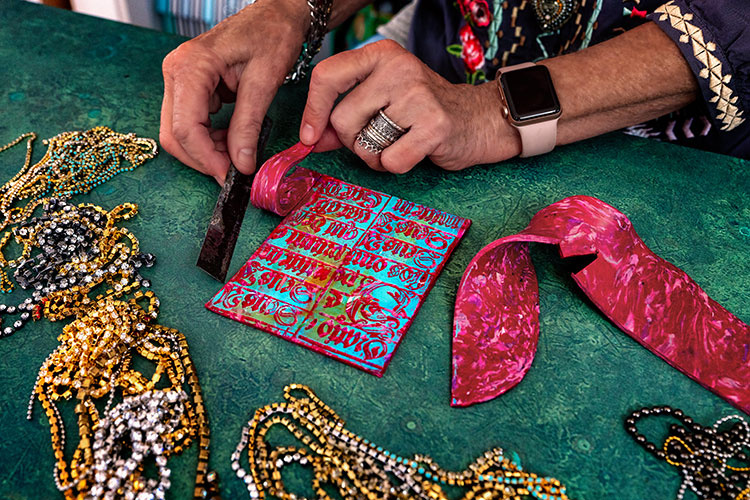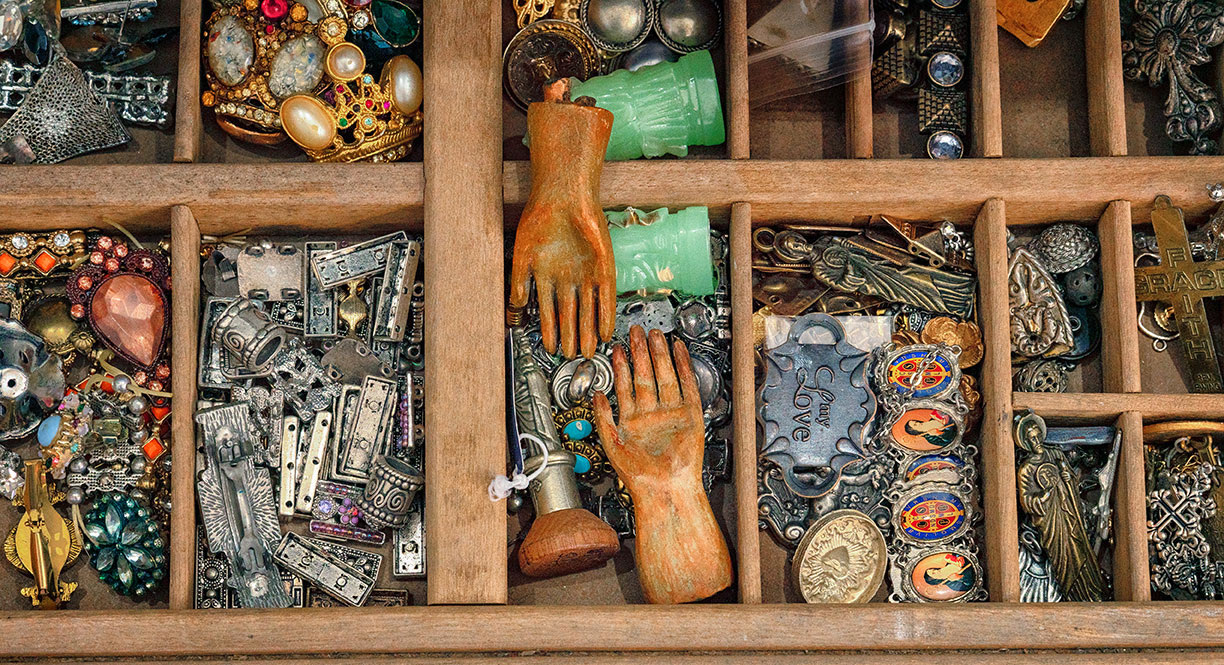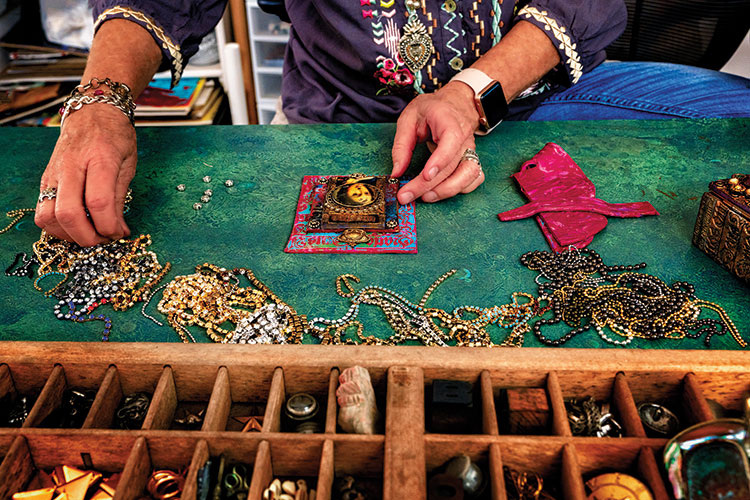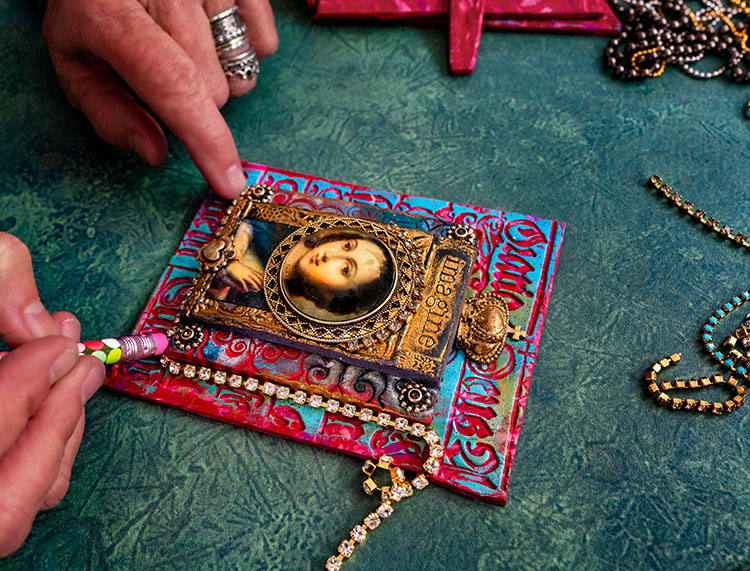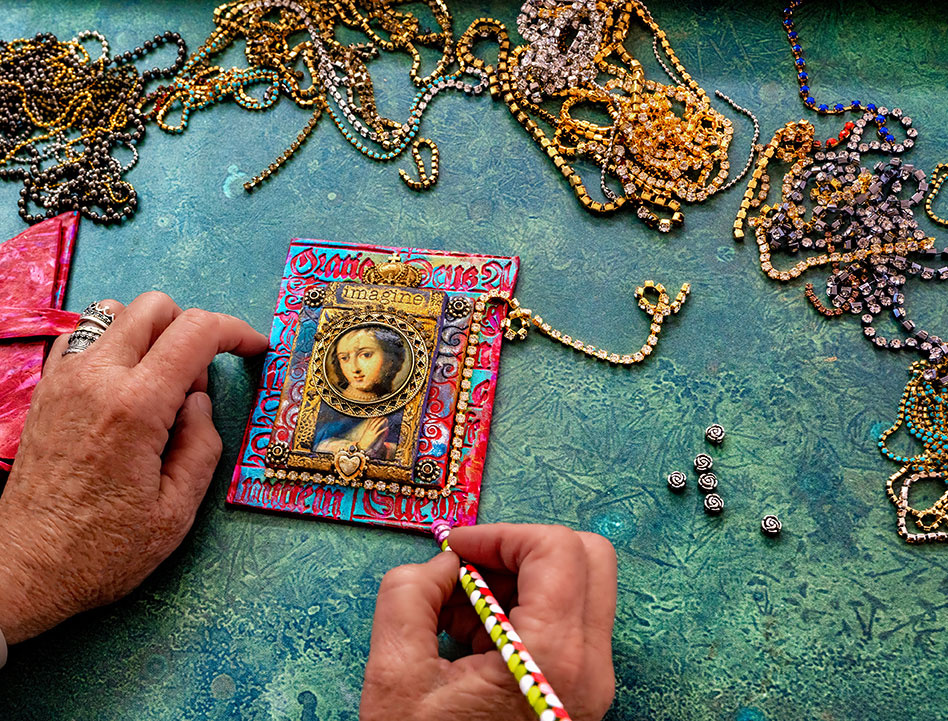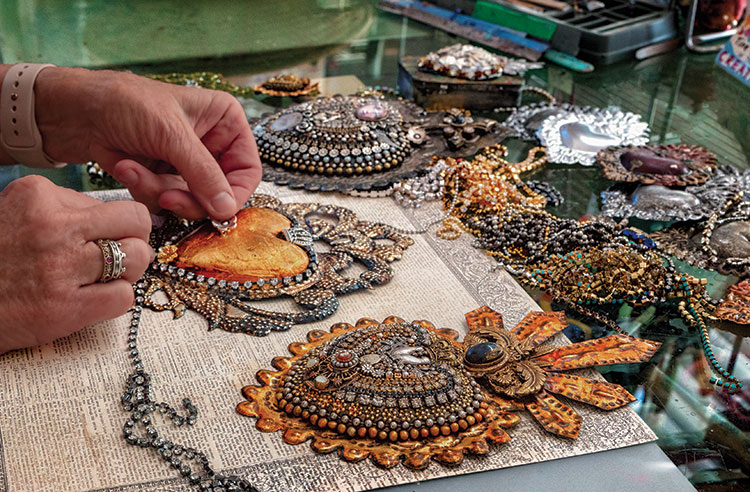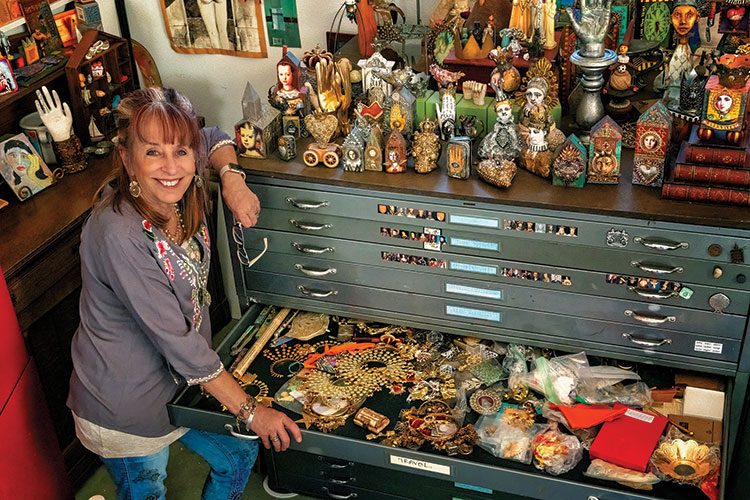
I am that rare breed, a native, third-generation Californian born in Los Angeles. Over the years, our family continually moved southward, first to Orange County and then to San Diego County the year I left for college. And leave I did, traveling by myself to Nairobi, Kenya to attend an international university. It was there that I met my husband, David, who was living in the Netherlands at the time and who fortuitously ended up at the same university. After two years in Kenya we returned to San Diego, where I finished up my undergraduate degree. I attended graduate school at San Diego State University, studying Art History.
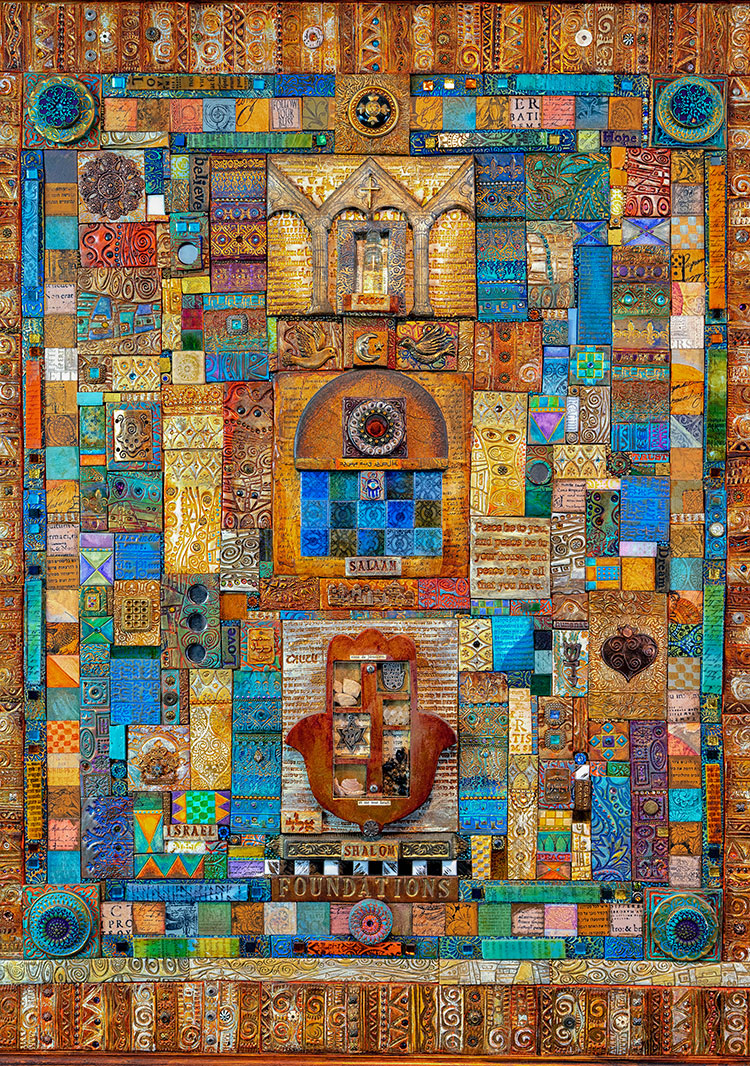
I initially applied to the Fine Arts program but didn’t have a portfolio at the time, just a lot of random drawings and paintings from my travels; hence, was rejected. I decided to pursue art history and thought I might consider a career in art restoration. Throughout my college years I worked in an art gallery at Bazaar del Mundo in Old Town, San Diego. It was a wonderful job and I was surrounded by beautiful artwork in a Mexican-themed environment.
However, near the end of my program I ended up pregnant with our identical twin sons, and nineteen months later had a third son and then our daughter. Needless to say, the seven-year time frame to write my thesis came and went as I was busily changing diapers and raising our tribe.
When our children were young, I was fortunate enough to be able to stay home with them. In the wee hours, I had a drafting table set up in the rafters of our garage and would sneak out there when the kids were sleeping to paint. It wasn’t until the year our youngest child graduated from high school that I attended my very first art retreat. It was called Moore, Moore and DeMeng and it was Teesha and Tracy Moore (of Artfest fame) along with guest artist Michael DeMeng.
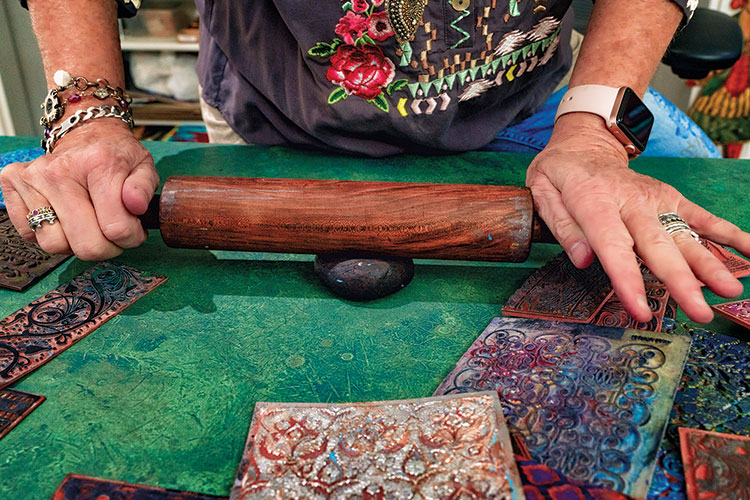
My art practice is essentially journaling in clay.
While I started off as a painter, I was seduced by polymer in the late 1990s and I have been hooked ever since. I took a polymer clay caning class at the Clay Factory in Escondido almost twenty-five years ago and while I learned how to make a cane, I never made another one again. As a matter of fact, after spending half the class just trying to condition my clay, it was amazing that I ever touched it again!
However, I was intrigued with this new material and its chameleon-like versatility. I began exploring polymer as a medium to alter through painting and stamping the surface, and this has become a hallmark of my work. It is the most seductive of mediums and it continues to lure me in. (Possible lift) It is exciting to see the incredible body of work in polymer being produced throughout the world.
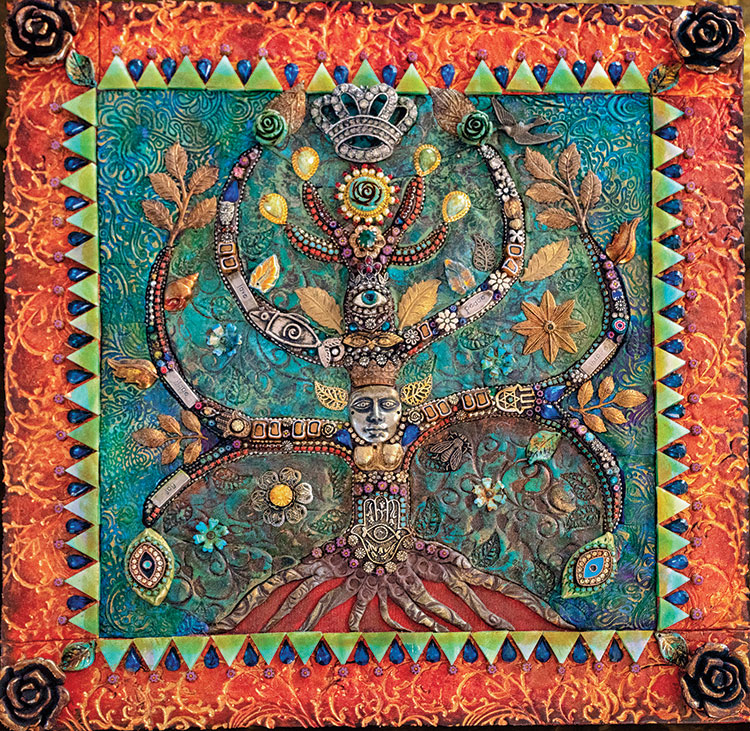
I started off using polymer clay to create handmade buttons for a line of hand-painted garments I was designing at the time. From there, those buttons turned into square tiles and my first mosaic of hand-painted tiles was created around 1996. By 2001, I began rubber-stamping into clay and became aware of the altered art movement that had been evolving over the previous decade. I began teaching at Artfest and other mixed-media art retreats. It was through this experience that I was given the opportunity to write my book, Mixed Media Mosaics, published in 2007.

The steps in my creative process are always the same. I condition the clay (ugh) and then roll out a slab. If using gold leaf, I place that down next. Then I use a deeply etched rubber stamp to create a design on the surface. Next, I paint the surface using acrylic paint, which is followed by the embedding process using glue and a pencil eraser to firmly embed metal findings and “do-dads” into the clay. The last step is baking, so that the entire polymer piece is complete when it goes through the baking process.
I am fascinated by people’s faiths and am drawn to religious iconography.
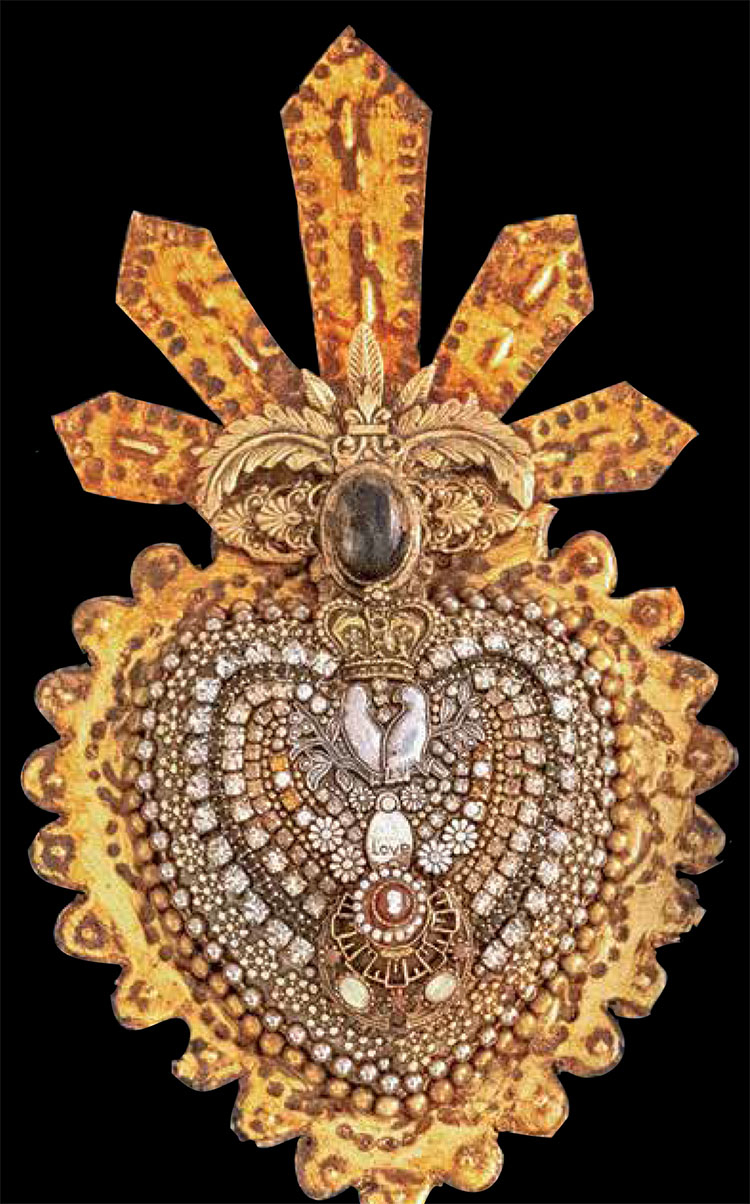
My style has evolved into a very eclectic mix of cultural and religious influences. Early on, the influence of Mexican folk art, combined with Medieval and Early Renaissance art has been a driving force in my work. I love Baroque and Colonial art as well, and have found that while I am not religious, my work tends to have symbols and imagery associated with Western religions, as I am fascinated by people’s faiths and am drawn to religious iconography. (Possible lift) Of late, I have been exploring alchemy and mysticism and am drawn to the dark, edgy feel of these newer pieces.
I often use just a fragment of text so that the viewer can bring their own thoughts to the artwork they are viewing. Many works are very personal in nature, like the mirrors I did in honor of my parents who both passed away from complications of Alzheimer’s disease. The creative process is cathartic and many of my mosaics include personal meaning.
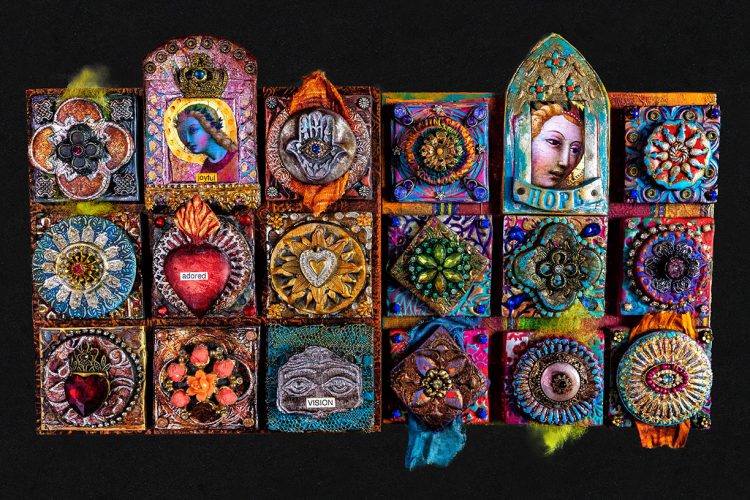
The drive for self-expression has contributed to my evolution as an artist. I think that perhaps teaching has had one of the greatest impacts on my journey as an artist. Coming up with new ideas for proposals has always kept me on my toes and kept my work moving forward. I enjoy the challenge of combining various mediums with polymer clay. The medium, while still in its infancy as an artistic medium, encourages exploration and experimentation as well. Pushing the boundaries in polymer has kept that initial excitement alive in me all these years.
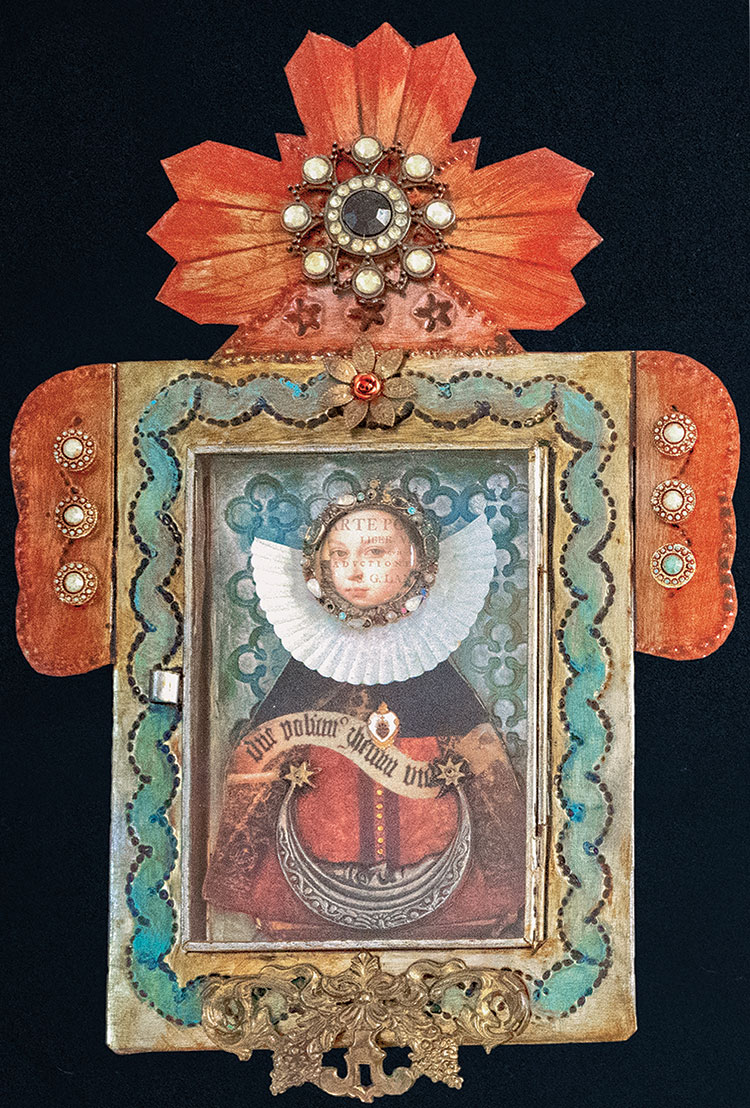
My future plans include lots of travel, continuing to teach, especially the boutique style workshops I have been conducting in my home, and further explorations in polymer clay. Perhaps I will write a second book, something I have been talking about for years but haven’t found the time to do. The joy of creating is in all of us and the process of “making” brings deep personal satisfaction and meaning to our lives. We all have a story equally important to share, and what better way to do it than through art?
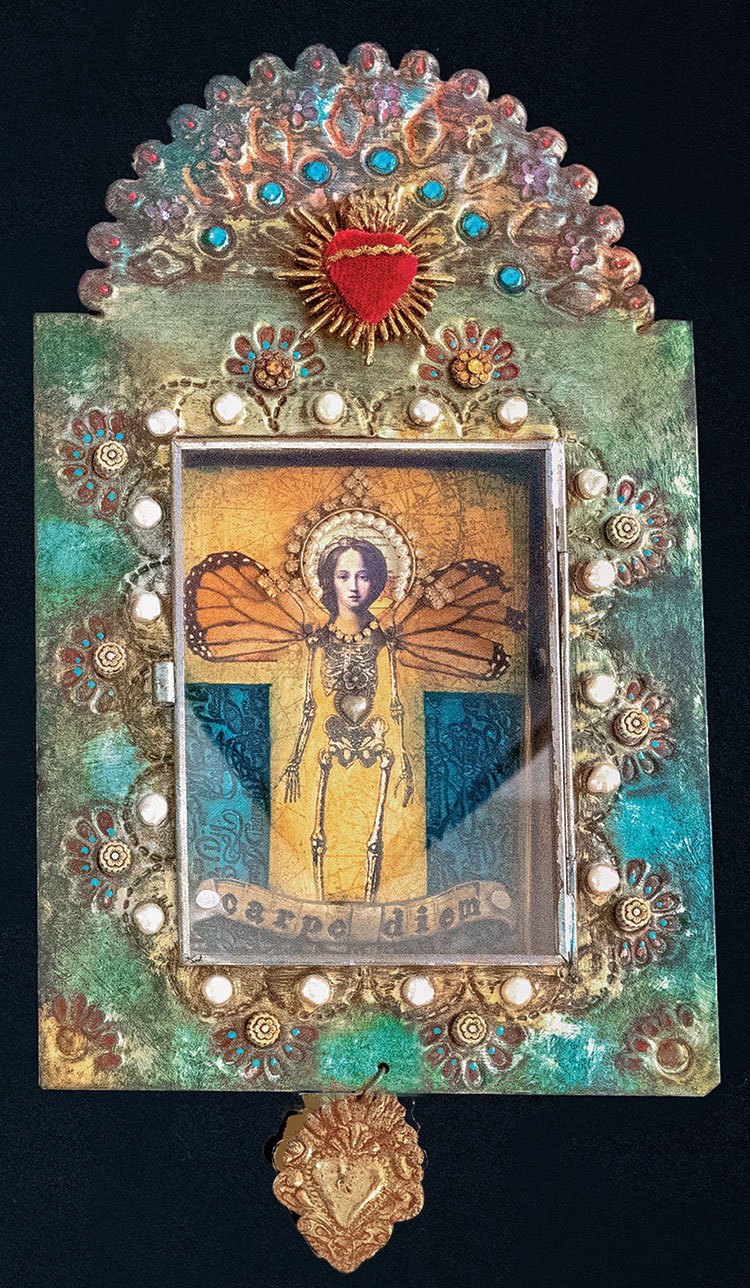 f
f

I am that rare breed, a native, third-generation Californian born in Los Angeles. Over the years, our family continually moved southward, first to Orange County and then to San Diego County the year I left for college. And leave I did, traveling by myself to Nairobi, Kenya to attend an international university. It was there that I met my husband, David, who was living in the Netherlands at the time and who fortuitously ended up at the same university. After two years in Kenya we returned to San Diego, where I finished up my undergraduate degree. I attended graduate school at San Diego State University, studying Art History.

I initially applied to the Fine Arts program but didn’t have a portfolio at the time, just a lot of random drawings and paintings from my travels; hence, was rejected. I decided to pursue art history and thought I might consider a career in art restoration. Throughout my college years I worked in an art gallery at Bazaar del Mundo in Old Town, San Diego. It was a wonderful job and I was surrounded by beautiful artwork in a Mexican-themed environment.
However, near the end of my program I ended up pregnant with our identical twin sons, and nineteen months later had a third son and then our daughter. Needless to say, the seven-year time frame to write my thesis came and went as I was busily changing diapers and raising our tribe.
When our children were young, I was fortunate enough to be able to stay home with them. In the wee hours, I had a drafting table set up in the rafters of our garage and would sneak out there when the kids were sleeping to paint. It wasn’t until the year our youngest child graduated from high school that I attended my very first art retreat. It was called Moore, Moore and DeMeng and it was Teesha and Tracy Moore (of Artfest fame) along with guest artist Michael DeMeng.

My art practice is essentially journaling in clay.
While I started off as a painter, I was seduced by polymer in the late 1990s and I have been hooked ever since. I took a polymer clay caning class at the Clay Factory in Escondido almost twenty-five years ago and while I learned how to make a cane, I never made another one again. As a matter of fact, after spending half the class just trying to condition my clay, it was amazing that I ever touched it again!
However, I was intrigued with this new material and its chameleon-like versatility. I began exploring polymer as a medium to alter through painting and stamping the surface, and this has become a hallmark of my work. It is the most seductive of mediums and it continues to lure me in. (Possible lift) It is exciting to see the incredible body of work in polymer being produced throughout the world.

I started off using polymer clay to create handmade buttons for a line of hand-painted garments I was designing at the time. From there, those buttons turned into square tiles and my first mosaic of hand-painted tiles was created around 1996. By 2001, I began rubber-stamping into clay and became aware of the altered art movement that had been evolving over the previous decade. I began teaching at Artfest and other mixed-media art retreats. It was through this experience that I was given the opportunity to write my book, Mixed Media Mosaics, published in 2007.

The steps in my creative process are always the same. I condition the clay (ugh) and then roll out a slab. If using gold leaf, I place that down next. Then I use a deeply etched rubber stamp to create a design on the surface. Next, I paint the surface using acrylic paint, which is followed by the embedding process using glue and a pencil eraser to firmly embed metal findings and “do-dads” into the clay. The last step is baking, so that the entire polymer piece is complete when it goes through the baking process.
I am fascinated by people’s faiths and am drawn to religious iconography.

My style has evolved into a very eclectic mix of cultural and religious influences. Early on, the influence of Mexican folk art, combined with Medieval and Early Renaissance art has been a driving force in my work. I love Baroque and Colonial art as well, and have found that while I am not religious, my work tends to have symbols and imagery associated with Western religions, as I am fascinated by people’s faiths and am drawn to religious iconography. (Possible lift) Of late, I have been exploring alchemy and mysticism and am drawn to the dark, edgy feel of these newer pieces.
I often use just a fragment of text so that the viewer can bring their own thoughts to the artwork they are viewing. Many works are very personal in nature, like the mirrors I did in honor of my parents who both passed away from complications of Alzheimer’s disease. The creative process is cathartic and many of my mosaics include personal meaning.

The drive for self-expression has contributed to my evolution as an artist. I think that perhaps teaching has had one of the greatest impacts on my journey as an artist. Coming up with new ideas for proposals has always kept me on my toes and kept my work moving forward. I enjoy the challenge of combining various mediums with polymer clay. The medium, while still in its infancy as an artistic medium, encourages exploration and experimentation as well. Pushing the boundaries in polymer has kept that initial excitement alive in me all these years.

My future plans include lots of travel, continuing to teach, especially the boutique style workshops I have been conducting in my home, and further explorations in polymer clay. Perhaps I will write a second book, something I have been talking about for years but haven’t found the time to do. The joy of creating is in all of us and the process of “making” brings deep personal satisfaction and meaning to our lives. We all have a story equally important to share, and what better way to do it than through art?
 f
f








 f
f
